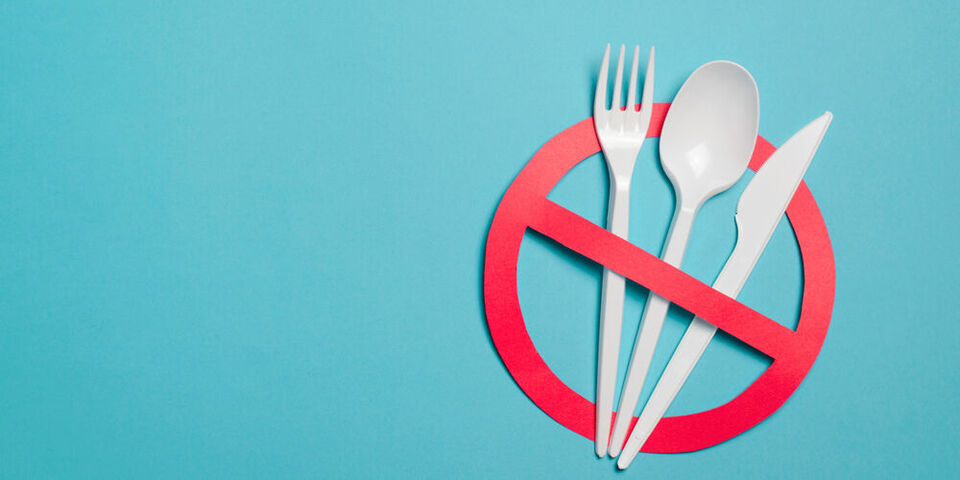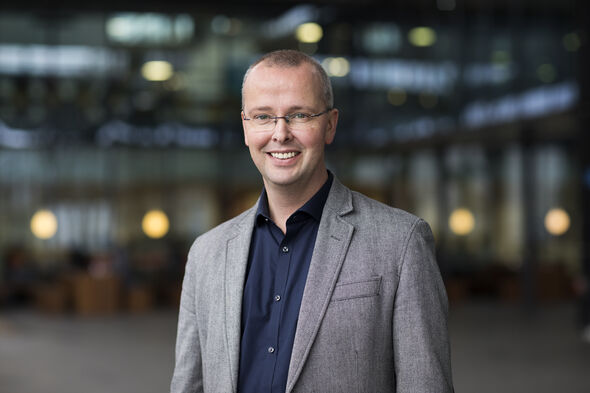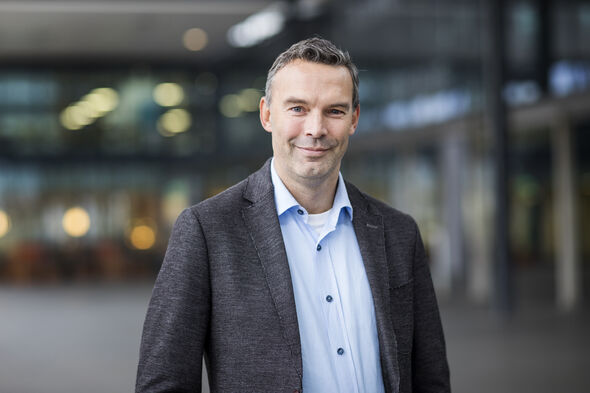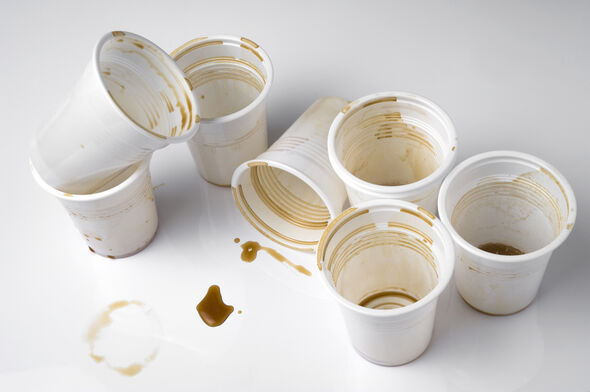Prof Talk | Disposing of disposables
No more disposable plastic plates at your BBQ, no drinks in plastic cups gracing a student house drinks party. Likewise, as of last week, disposable plastic cutlery, drinking straws and cotton buds are banned in the EU. The ban on disposable plastic items, intended to combat the plastic soup, has prompted the packaging industry to seek more sustainable alternatives. They have some way to go, believe ‘plastic professors’ Jaap den Doelder and Remco Tuinier. What will we bring along to a picnic in the park this summer?
A hundred and fifty million metric tons of plastic is currently floating in the sea, estimates say. And the quantity of plastic in the great oceans is ever increasing. Some of this is litter dropped from container ships or lost items from the fishing industry, but most of it, by a long chalk, is street litter that ends up here via rivers. To prevent even more plastic entering the sea, disposable plastics were banned in the EU on July 3rd. And in the coming years beverage bottles must contain an ever increasing percentage of recycled plastic, and manufacturers will pay towards the cost of plastic waste processing. As of last week, the Netherlands has added water and soft drink bottles to its refundable bottles system as a measure to reduce litter.
Very positive, believes TU/e Full Professor of Physical Chemistry, Remco Tuinier. “We must start using less plastic, and when we do use it, do so with awareness. Priority must now be given to preventing disposable plastics from getting into the environment. For nature, no scenario is more dramatic than this. Plastic does not rot away, instead it decays into tiny pieces - microplastics - that pile up in the environment, with predictable consequences.”
There is large overlap between the types of packaging now prohibited and the types of plastic waste found in the plastic soup, says Jaap den Doelder, part-time Professor in Physical Chemistry of Polymers. “Everything that goes into the sea is too much. So in this sense the ban is a good thing. But at the same time, I'm worried about suboptimal alternatives. The paper straw isn't great to drink through and is often wrapped in plastic foil. I wish it were easy. As consumers we have to be more aware of our choices, and take more responsibility. How important is a straw? Can we do without one?”
The 'unnecessary' category may well be the place for a drinking straw, but some types of plastic packaging are certainly useful, to combat food wastage, for example. In view of this Den Doelder prefers the term Single Use Plastics (SUP) to disposable plastics - “Plastics are not designed to be thrown away.” The environment impact of a piece of plastic packaging depends on various factors like material, application, scope for reuse. According to Den Doelder a life cycle analysis (LCA) reveals a great deal and a study like this also provides starting points for improving sustainability. It is essential even, echoes TU/e colleague Remco Tuinier. “An LCA allows you to approach a discussion very rationally. Take this example, the Danish government conducted an LCA when people were keen to replace plastic bags with paper ones; many people think this is ‘better’ for the environment. The opposite turned out to be true: the energy cost of making a paper bag is seven times more than for a plastic bag.”
Den Doelder likes to take the coffee cup debate as an example. “Polystyrene cups - easily recyclable by the way - were replaced by cups made of plasticized cardboard. A material that can't go into the waste paper, but can be collected separately, as we do here at TU/e using the special waste bins, the Tulips. But at home these cups end up in the general refuse and are incinerated, bumping up CO2 emissions. Ideally, you are looking for a solution that benefits both the climate and the plastic soup. This means, wherever possible, choose to reuse - take your own coffee mug with you - but otherwise a circular model is preferable, and that means the collection step is essential. Not incinerating but keeping the material in the chain. Can we make something new out of these coffee cups?”
Much progress has been made in recent decades, Den Doelder is keen to point out. The quantity of plastic needed to produce a piece of packaging has been greatly reduced, stronger and better plastics have been developed. Not something that immediately springs to mind, but made possible by high tech design. Similarly, within a number of projects TU/e is also working to help make packaging materials more sustainable, tells Den Doelder. “We try to work with all the links in the chain, with various partners. For example, in the POLYNSPIRE project we are looking at the reuse of mattresses. They contain materials that cannot be recycled because they've lost the capacity to melt. But remelting and reprocessing become possible when the chemical composition of the material is changed. We've already demonstrated this in the lab, which is gratifying.
Another large project is ProLiFeX, in which we are working on the reprocessing of packaging foil, a product with a very wide range of uses: from agriculture to pallet reinforcement and keeping soft drink bottles together. Valuable material, but also voluminous and lightweight. Making new foil from this material entails a great many technical challenges. Food packaging lies somewhere in the future; initially, we are making things like potting soil bags with it. These don't need to be transparent and can carry a slight odor. How can we make 'green' bags from 'grey' grains, and how can we print on them? Practical issues we are using our knowledge to resolve.”
With the summer vacation just around the corner, let's revisit the garden party, the student house drinks party and the BBQ. Because here, according to Den Doelder, there is plenty to make more sustainable. “Just give a little more thought to the consequences of your choice. Beer you can just as easily drink from the bottle, and for other drinks you don't necessarily need to buy a stack of disposable cups; often there's enough crockery. And which foods will you choose to bring to that picnic? How will you transport it? Could you leave off that extra layer of foil? Can everyone bring their own plate and cutlery?” And, “Above all, clear up after yourself, but don't put everything into one garbage bag, separate it out,” says Tuinier. “If you bring plastic, take it home with you. Then you won't leave any litter behind.”





Discussion